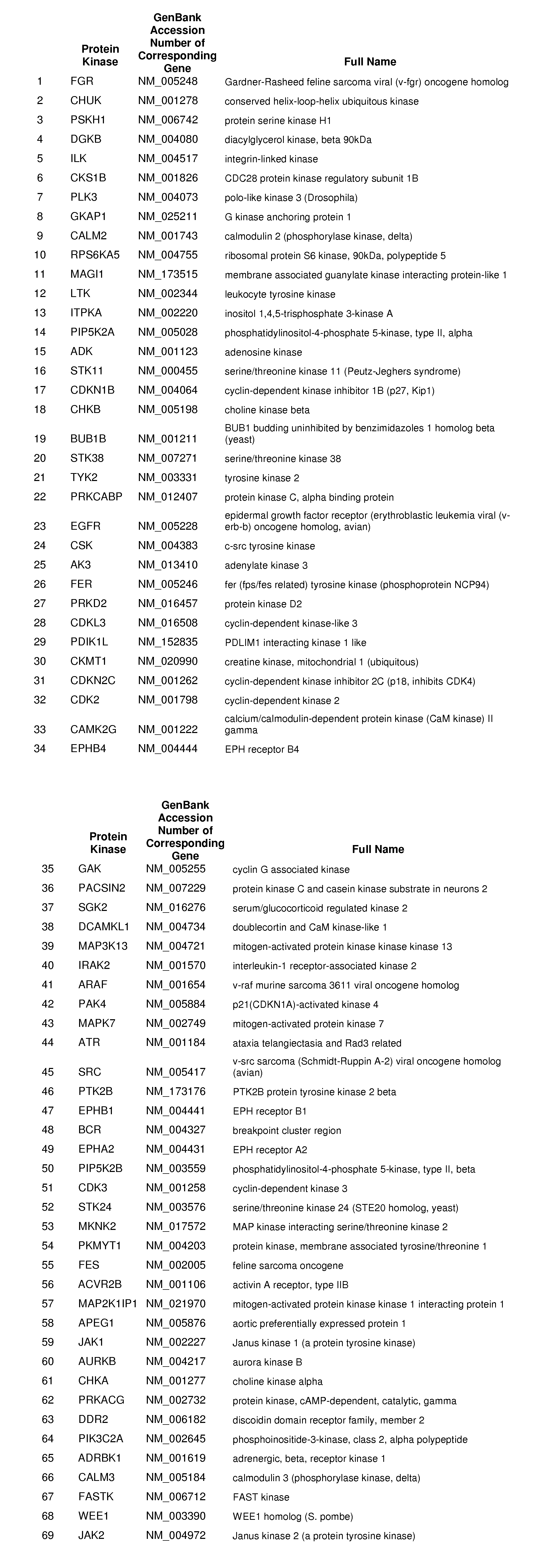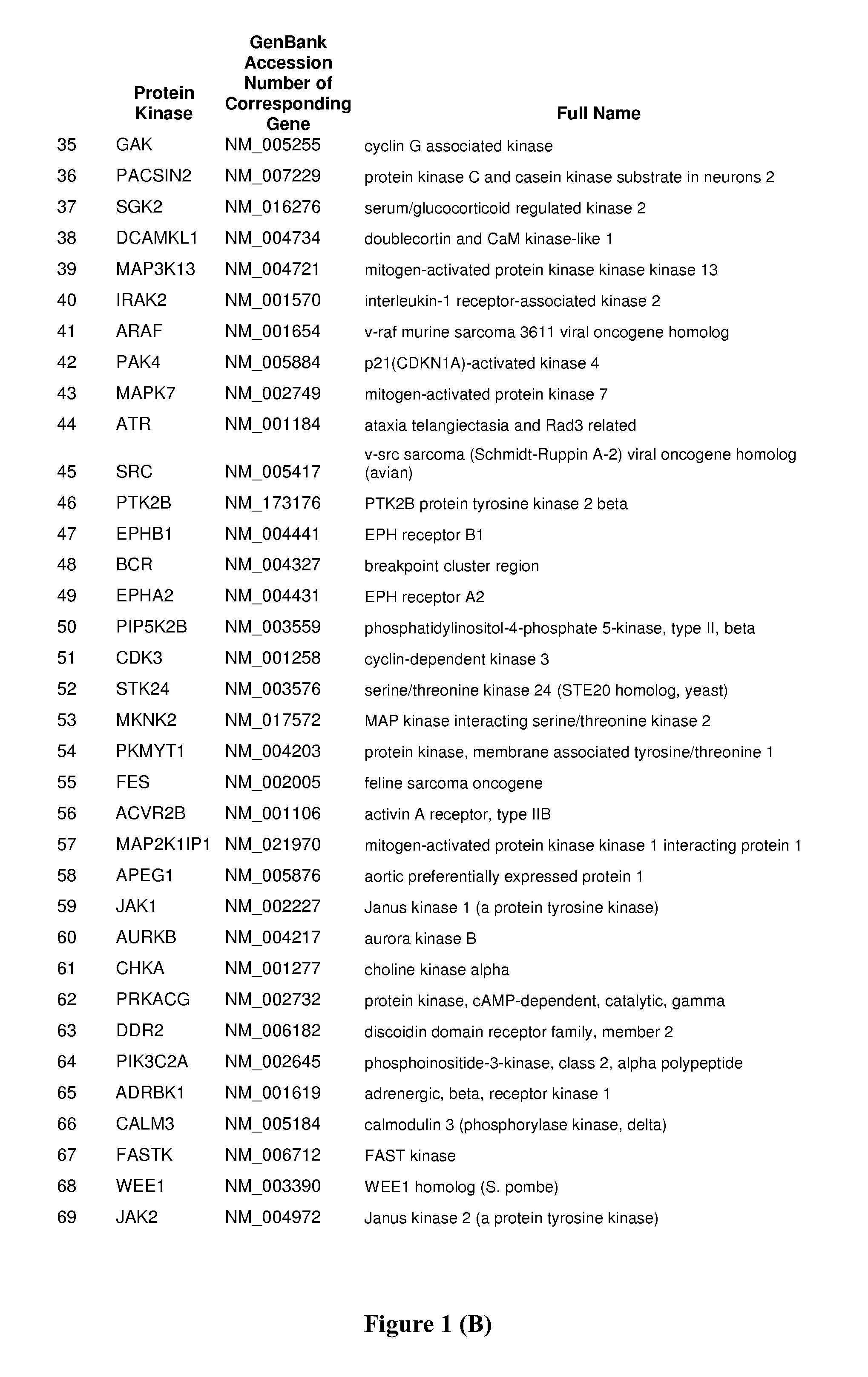Host Cell Kinases as Targets for Antiviral Therapies Against HCV Infection
a technology of host cell kinase and antiviral therapy, which is applied in the direction of viruses, antibody medical ingredients, dna/rna fragmentation, etc., can solve the problems of hcv vaccine not being available, liver transplantation not being a cure, graft loss, etc., to prevent hcv infection, reduce the likelihood of a susceptible cell, and prevent hcv recurrence.
- Summary
- Abstract
- Description
- Claims
- Application Information
AI Technical Summary
Benefits of technology
Problems solved by technology
Method used
Image
Examples
example 1
Preliminary Identification of Host Cell Kinases as Co-Factors for HCV Entry
1. Materials and Methods
[0158]Cells and Replicons. HEK 293T, Huh7 and Huh7.5.1 cells used in the present study have previously been described (Bartosch, 2003; Barth, 2003; Zhong, 2005). Primary human hepatocytes were isolated and cultured as previously described (David, 1998, which is incorporated herein by reference in its entirety). Subgenomic HCV replicon JFH1-SGR used herein has also previously been described (Kato, 2005).
Production of Retroviral HCV and VSV pseudoparticles. HCVpp derived from H77 and VSVpp derived were generated as previously described (Bartosch, 2003; Barth, 2006). Pseudoparticles (pp) without envelope glycoproteins (control pp) were used as negative control (Barth, 2003). The HCVpp and VSVpp preparations were adjusted in order to obtain equal luciferase activities after Huh7 infection.
Production of Recombinant HCV and Infection Assays. Bicistronic plasmid pFK-Luc-Jc1 (Koutsoudakis, 200...
example 2
Refined Identification of Host Cell Kinases as Co-Factors for HCV Entry
1. Materials and Methods
[0169]Reagents and Antibodies. Human Kinase siRNA Set Version 2.0 (pool of four siRNAs) and individual siRNAs were obtained from Qiagen. Erlotinib (Tarceva®), Dasatinib (Sprycel®), Gefitinib (Iressa®), Vandetanib (Zactima®) and Lapatinib (Tykerb®) were obtained from IC Laboratories, TpIII kinase inhibitor and Wortmannin from Calbiochem, Flavopiridol and Dorsomorphin from Sigma-Aldrich. Anti-EphA2 C-20 and protein A / G-agarose beads were obtained from Santa Cruz Biotechnologies, and -EGFR from Millipore and alkaline-phosphatase labelled secondary antibodies from GE Healthcare.
Cell lines, Primary Hepatocytes and Replicons. Same as above.
Genome-wide RNAi Kinase HCV Entry Screen. Screening was performed at the Transfected Cell Array (TCA) platform, Institut de Génétique et de Biologie Moléculaire et Cellulaire (IGBMC) in Illkirch, France. The library used for this screen was the Human Kinase si...
PUM
| Property | Measurement | Unit |
|---|---|---|
| Biological properties | aaaaa | aaaaa |
Abstract
Description
Claims
Application Information
 Login to View More
Login to View More - R&D
- Intellectual Property
- Life Sciences
- Materials
- Tech Scout
- Unparalleled Data Quality
- Higher Quality Content
- 60% Fewer Hallucinations
Browse by: Latest US Patents, China's latest patents, Technical Efficacy Thesaurus, Application Domain, Technology Topic, Popular Technical Reports.
© 2025 PatSnap. All rights reserved.Legal|Privacy policy|Modern Slavery Act Transparency Statement|Sitemap|About US| Contact US: help@patsnap.com



